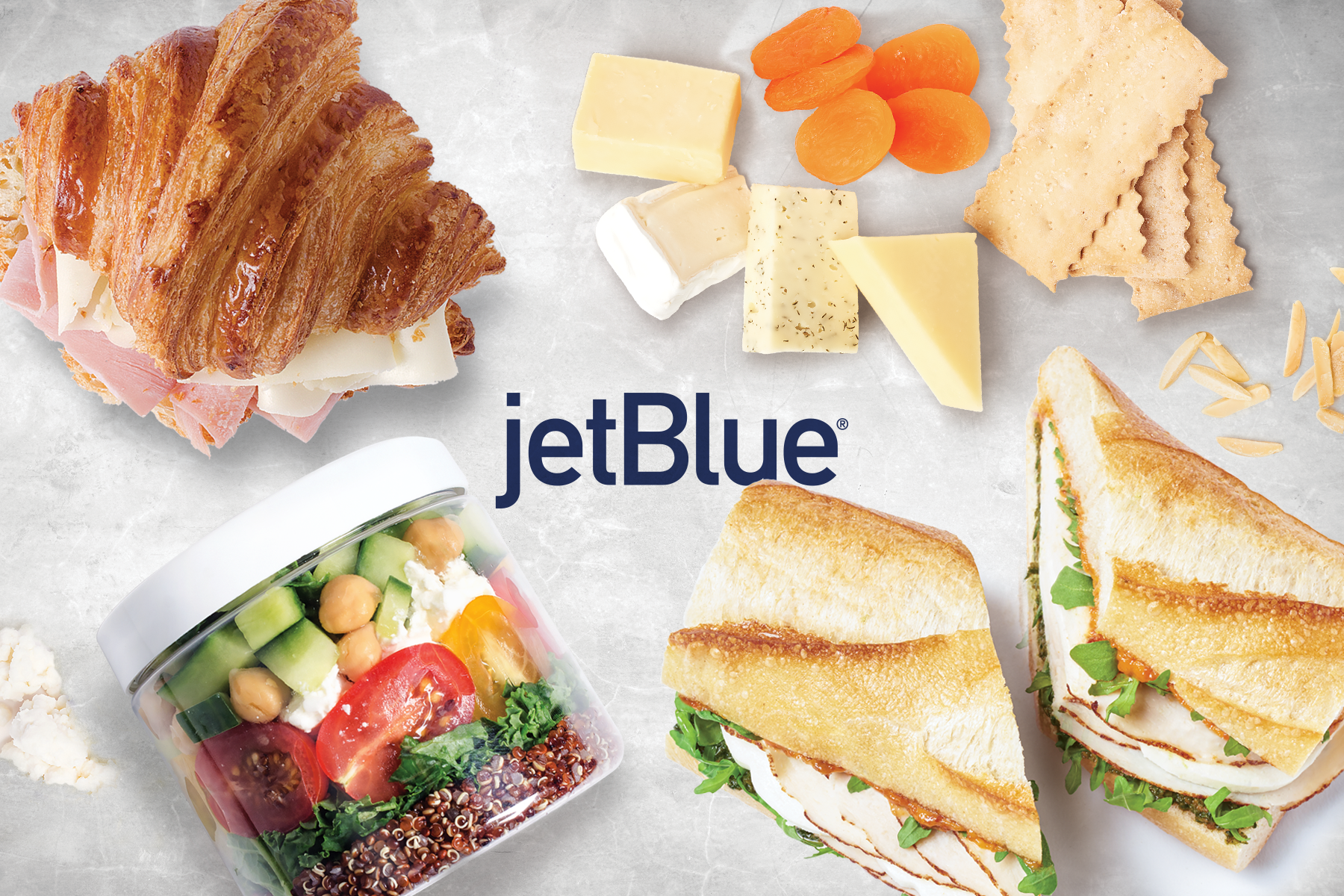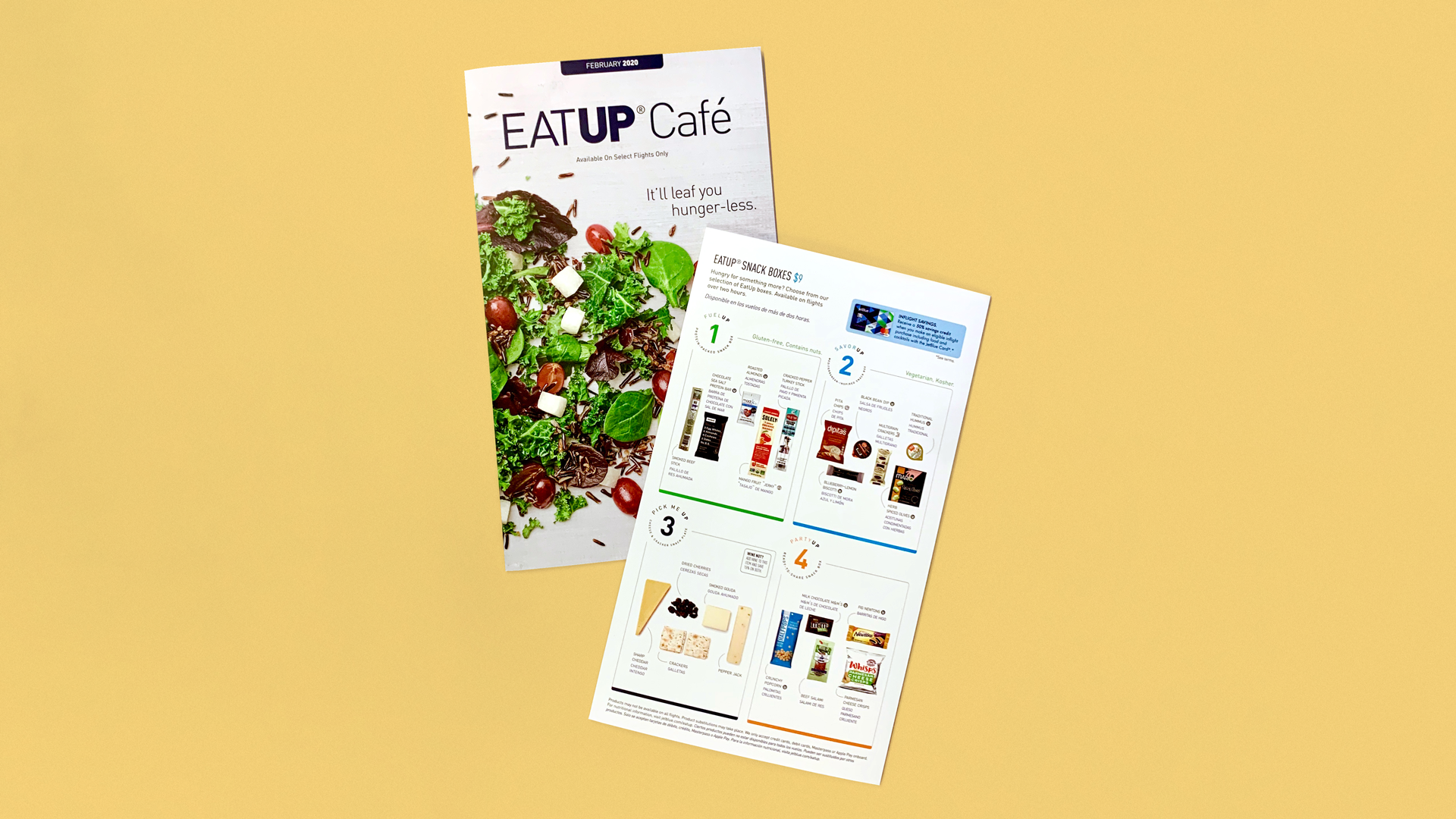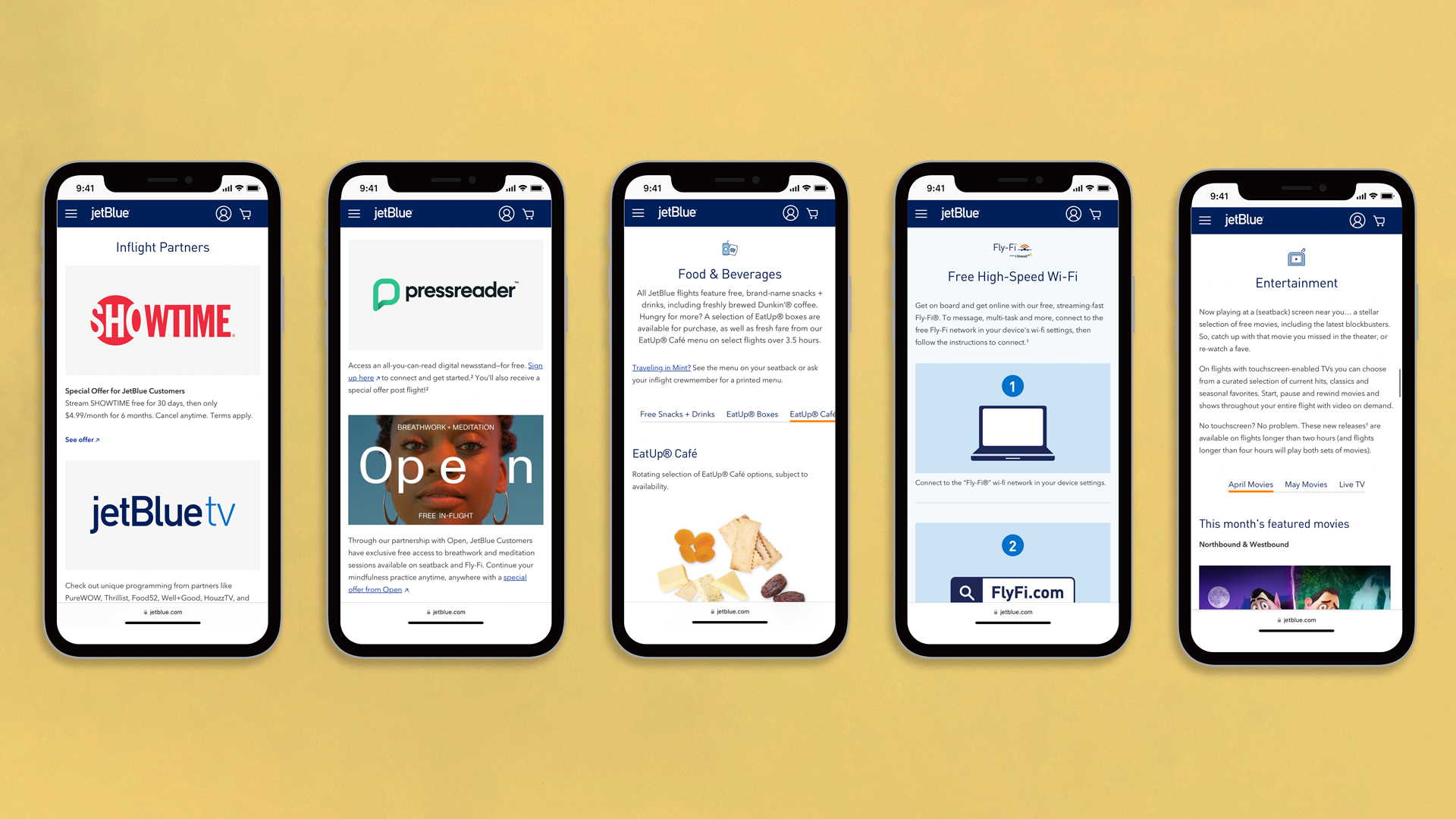JetBlue Onboard Offerings
During the pandemic, the traditional printed menu card faced the challenges of navigating a touchless-world. And as world recovered, the menu card also adapted to a hybrid lifestyle.
Project Type: Menu development and production
Role: Lead designer and project manager
Original Print
The original menu showed the full food and beverage services offered on JetBlue routes. This menu used to coexist with another printed card that promoted inflight entertainment, JetBlue route map, and brand promotions. These two cards existed in a bi-monthly rhythm of touching up images, making sure the layout and content are updated, and working with the printers to approve everything for final delivery.
Covid Pivot
When Covid hit NYC hard in March 2020, the decision to remove high physical touchpoints from the JetBlue experience was made immediately – that included the bimonthly prints that outlined all onboard services including snacks and inflight entertainment.
DIGITAL CHALLENGES
Although the cards were removed, a limited amount of inflight snacks and water were available. An alternative to the card was required to make sure customers knew what was available on a JetBlue flight without browsing the physical card.
There were many challenges in figuring exactly how a digital menu would work. We knew it would be accessed through customers’ personal entertainment devices (PED) and/or seatback screens. These were key considerations determined how the digital menu will work:
Timeline With the nature of the pandemic and sudden change in the food & beverages service, the need to show customers what they can expect on their flight was immediate.
Updates Frequent updates to keep up with inflight products and version control are necessary.
Fleet Type Across the entire fleet, we had two different wi-fi systems and three different types of seatback screens. Each one functioned a little differently.
Wi-Fi Accessibility Even with JetBlue’s free Fly-Fi, connection to wi-fi from take-off through landing is not guaranteed, so the digital card has to be accessible in an offline format. Each plane has a slightly different wi-fi and entertainment system, so the card has to be designed for each one while maintaining the same use.
After many conversations with our IT team and outside business partners to determine what is feasible and what is not, it ultimately came down to the development timeline, complexities with airplane wi-fi systems, and a platform that is subject to change. The least costly option, for both finances and time, was to create a PDF that can be hosted on the Fly-Fi portal, which can be accessed on any JetBlue plane through customer PEDs regardless of the wi-fi connection. For all these new digital assets, we made sure everything was ADA compliant.
Print Makes a Comeback
Unfortunately, we learned through take rate tracking that only 1% of all flying customers were looking at the menu pdfs. Even with understanding the existing barriers to accessing the pdfs, there’s an undeniable preference and ease to browsing physical card. The challenge was funding a printed menu but also maintaining a digital option.
Key Takeaways
There will always be a need to adapt and explore possibilities in changing circumstances. Owning this project has taught me to learn how to react to multiple stakeholders but ultimately learn from real customer experiences to determine how to make the experience more seamless.



